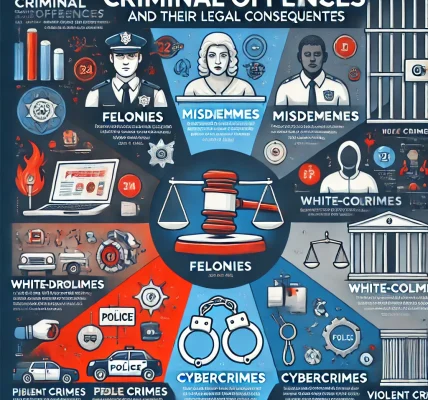Introduction
When someone is arrested and charged with a crime, they may not have to stay in jail until their trial. Instead, the legal system allows for bail and bond, which provide a way for the accused to remain free while awaiting court proceedings. However, understanding how bail and bond work, their differences, and their legal implications is crucial.
In this article, we will explore:
- The meaning and purpose of bail and bond.
- The different types of bail and bond.
- The legal process involved.
- Factors affecting bail decisions.
- Potential consequences of failing to meet bail conditions.
1. What is Bail?
Bail is a financial arrangement that allows a defendant to be released from jail before trial by paying a set amount of money to the court. The purpose of bail is to ensure that the accused appears for all scheduled court proceedings.
Key Features of Bail:
- Bail is a temporary release until the trial date.
- It requires payment as a guarantee.
- The amount is set by a judge based on various factors.
- If the defendant attends all hearings, the bail money is refunded (except in some cases with administrative fees).
- Failure to appear in court results in bail forfeiture and re-arrest.
2. What is Bond?
A bond is an alternative to bail that involves a third party, usually a bail bondsman or bonding company, to guarantee the defendant’s court appearance.
Key Features of Bond:
- A bail bond is typically used when the defendant cannot afford to pay the full bail amount.
- A bail bondsman charges a non-refundable fee (usually 10-15% of the bail amount) and secures the defendant’s release.
- The bondsman provides a surety bond to the court, assuring the defendant’s return.
- If the defendant does not appear in court, the bondsman is responsible for paying the full bail amount and may hire a bounty hunter to locate the accused.
3. Types of Bail and Bond
There are several types of bail and bond options, depending on the jurisdiction and the nature of the offense.
A. Cash Bail
- The defendant pays the full bail amount in cash to the court.
- If the defendant complies with court orders, the amount is refunded after the trial.
- Used when the accused has sufficient funds.
B. Surety Bond (Bail Bond)
- A bail bondsman pays the court on behalf of the accused.
- The defendant pays a non-refundable fee to the bondsman (usually a percentage of the bail amount).
- A collateral (property or assets) may be required as security.
C. Property Bond
- The defendant offers real estate or valuable property as collateral.
- If the defendant fails to appear, the court seizes the property.
- Requires legal documentation and valuation.
D. Own Recognizance (OR) Release
- The judge allows the defendant to go free without payment, based on a promise to return to court.
- Usually granted for minor offenses or when the defendant has a good record.
E. Citation Release (Cite-Out)
- The police issue a citation for the defendant to appear in court instead of making an immediate arrest.
- Used for minor infractions.
F. Federal Bail Bonds
- Used for federal crimes, requiring a federal bail bondsman.
- Higher bail amounts and strict conditions apply.
G. Immigration Bail Bonds
- Specifically for non-citizens facing immigration-related detention.
- Requires a licensed immigration bail bondsman.
4. The Bail and Bond Process
Step 1: Arrest and Booking
- The defendant is arrested and processed at the police station.
- Information is recorded, including fingerprints and photographs.
- The defendant remains in custody until a bail hearing.
Step 2: Bail Hearing
- A judge determines whether bail is granted and its amount.
- Factors considered include severity of the crime, flight risk, criminal history, and community ties.
Step 3: Payment of Bail or Bond
- The defendant (or family) pays cash bail directly to the court.
- If a bondsman is involved, a contract is signed and a non-refundable fee is paid.
- If property is used as collateral, legal documentation is required.
Step 4: Release from Jail
- Once bail is posted, the defendant is released with conditions.
- The accused must comply with court-mandated restrictions (e.g., travel restrictions, check-ins, no-contact orders).
Step 5: Court Appearances and Trial
- The defendant must attend all scheduled court dates.
- If the defendant complies, bail is returned after the case concludes.
- If the defendant misses court, bail is forfeited, and a warrant may be issued.
5. Factors Affecting Bail Decisions
Judges consider several factors before setting bail:
- Severity of the offense – Serious crimes (e.g., murder) may have higher bail or no bail at all.
- Criminal history – Repeat offenders may face higher bail amounts.
- Flight risk – If the defendant is likely to flee, bail may be denied or increased.
- Community ties – Strong connections to family and employment may lower bail amounts.
- Risk to public safety – If the accused is a danger to society, bail may be refused.
6. Consequences of Violating Bail Conditions
If a defendant violates bail conditions, the following may occur:
- Bail revocation – Immediate arrest and detention until trial.
- Forfeiture of bail money – Any paid bail amount is lost.
- Additional charges – Skipping court (bail jumping) may lead to extra criminal charges.
- Bondsman action – If released on bond, the bounty hunter may track down the defendant.
Conclusion
Bail and bond serve as important legal mechanisms that balance the right to freedom with ensuring court compliance. While bail allows temporary release, bond provides an alternative for those who cannot afford bail. Understanding the process, legal requirements, and responsibilities can help defendants make informed decisions and avoid legal consequences.




